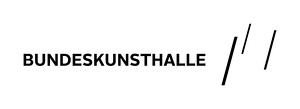Gurlitt: Status Report
An Art Dealer in Nazi Germany
September 14, 2018–January 7, 2019
Niederkirchnerstraße 7
10963 Berlin
Germany
News that the Bavarian Public Prosecutor’s office had seized the art collection of Cornelius Gurlitt (1932–2014), caused a national and international sensation when it was made public in November 2013. The 1,500 works the reclusive son of the art dealer Hildebrand Gurlitt (1895–1956) had inherited from his father raised suspicions: had they been looted by the Nazis before and during the Second World War?
To investigate these suspicions and to study the cache, the German government provided funding to establish an international team of experts, the Schwabing Art Trove Taskforce. Cornelius Gurlitt agreed to restitute any work identified as expropriated unlawfully. Thus far, four such works have been returned to the heirs of their rightful owners.
In the exhibition at the Gropius Bau, the Bundeskunsthalle Bonn and the Kunstmuseum Bern present some 200 works from the Gurlitt estate and a wide range of original documents and historical photographs. The exhibition traces the twists and turns of Hildebrand Gurlitt’s career: from passionate champion of Modernism to participant in and beneficiary of the “Aktion Entartete Kunst” and, finally—despite a Jewish grandmother—to head buyer for Hitler’s planned “Führer Museum” in Linz.
That notwithstanding, after the end of the war, he was able to resume his pre-war career as museum director without too much trouble. Complementing Gurlitt’s ambiguous biography, the exhibition sheds light on the lives of some of his contemporaries, focusing on the fate of Jewish artists, collectors and art dealers who fell victim to the Nazi regime.
“Gurlitt: Status Report also scrutinises the extent to which the Nazi regime affected cultural politics and the art trade and how it instrumentalised both areas in the interest of totalitarian control and propaganda.”
–Rein Wolfs
Spanning a wide range of eras and styles—from Dürer to Monet and from Cranach to Kirchner and Rodin—the exhibition presents works that have been hidden from public view for decades and provides an insight into the current state of the investigation of the Gurlitt trove. By tracing the provenance of each of the works on show, the exhibition also sheds light on the complex history of the individual objects. Many of them were seized as “degenerate” from German museums in 1937, others may have been unlawfully expropriated from their owners. For a great number of works, the provenance is likely to remain unclear because conclusive documents are lost or because the dealers involved made sure to cover their tracks.
An Exhibition of the Bundeskunsthalle, Bonn and the Kunstmuseum Bern at the Gropius Bau, Berlin
Curators: Rein Wolfs, Agnieszka Lulińska
Assistant Curator: Lukas Bächer
Scientific advisers:
Andrea-Baresel-Brand, Meike Hopp, Birgit Schwarz
Director Bundeskunsthalle: Rein Wolfs
Managing Director Bundeskunsthalle: Patrick Schmeing
Head of Corporate Communications/Press Officer: Sven Bergmann
T +49 228 9171 204 / presse [at] bundeskunsthalle.de
Bundeskunsthalle at Gropius Bau
Gropius Bau
Niederkirchnerstraße 7
10963 Berlin
www.bundeskunsthalle.de
www.gropiusbau.de
Current exhibitions at Bundeskunsthalle, Bonn:
Nazca - Divine Drawings
Archaeological Discoveries from Southern Peru
until September 16, 2018
Vajiko Chachkhiani
Heavy Metal Honey
until October 14, 2018
The Playground Project
Indoor & Outdoor
until October 28, 2018
Soon to come:
Princely Painters
September 28, 2018 to January 27, 2019
Ernst Ludwig Kirchner
Imaginary Travels
November 16, 2018 to February 17, 2019
Modernist Cinema
Film in the Weimar Republic
December 14, 2018 to March 24, 2019
The Bundeskunsthalle and the Gropius Bau are supported by the Federal Government Commissioner for Culture and the Media.



